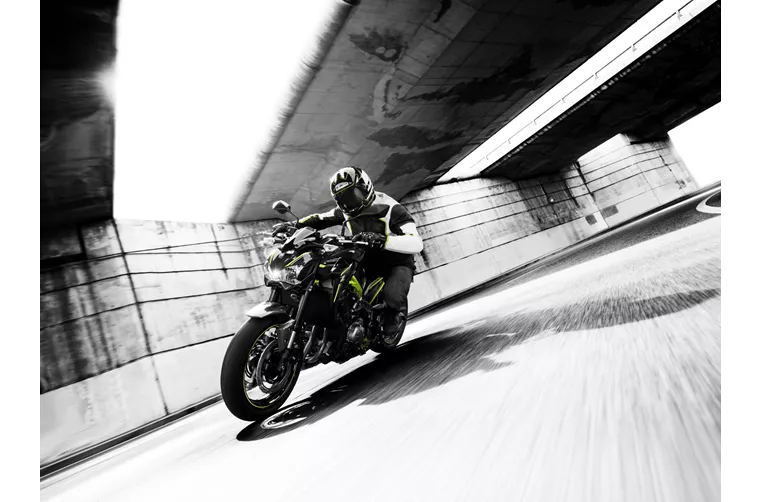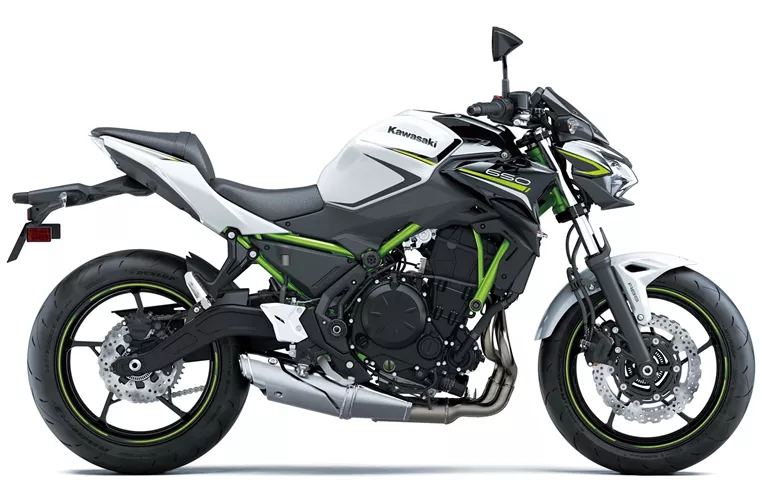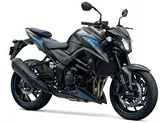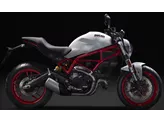Kawasaki Z900 2018 vs. Kawasaki Z650 2020

Kawasaki Z900 2018
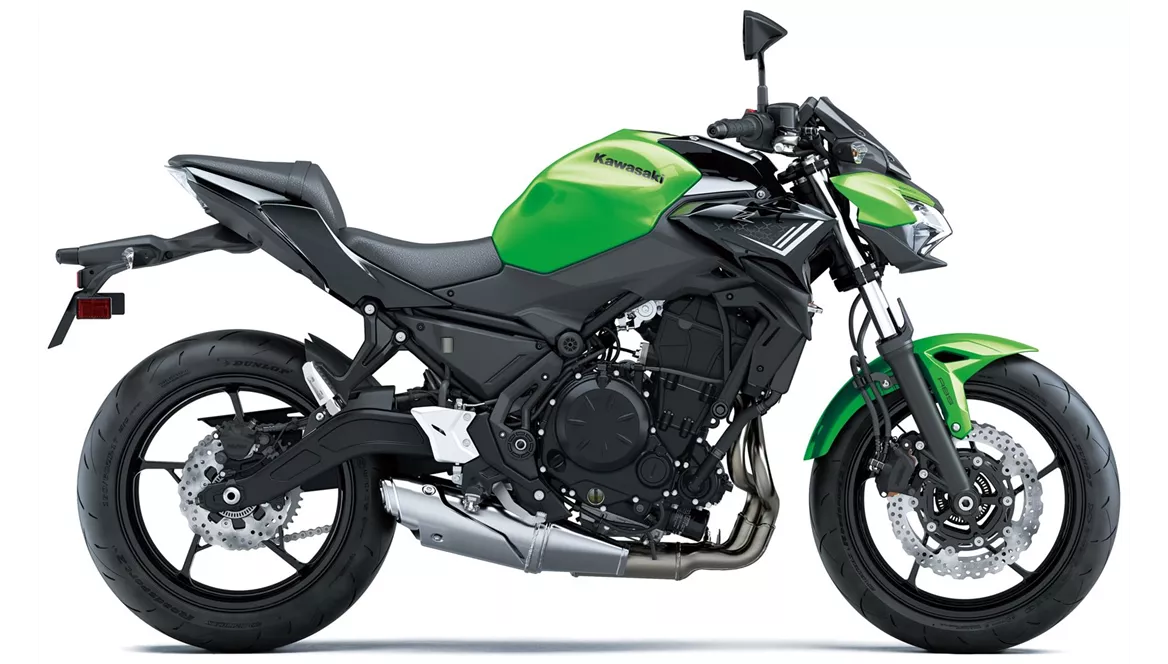
Kawasaki Z650 2020
Vue d’ensemble - Kawasaki Z900 2018 vs Kawasaki Z650 2020
The Kawasaki Z900 2018 is equipped with a powerful and smooth inline four-cylinder engine that delivers 125.4 horsepower and 98.6 Nm of torque. The engine is fuel-injected and has a displacement of 948cc. It is cooled by a liquid cooling system.
In terms of suspension, the Z900 2018 features an upside-down telescopic fork at the front and a swing arm with a monoshock at the rear. The rear suspension can be adjusted for preload and rebound. The frame of the bike is made of steel and has a double cradle design.
The front brakes of the Z900 2018 are double disk with a diameter of 300mm and four pistons. The brakes use petal technology for improved performance. The bike also comes with ABS as an advanced rider assistance system. The front tire has a width of 120mm and a diameter of 17 inches, while the rear tire has a width of 180mm and a diameter of 17 inches. The wheelbase is 1450mm and the seat height is 795mm. The bike has a kerb weight of 210kg with ABS.
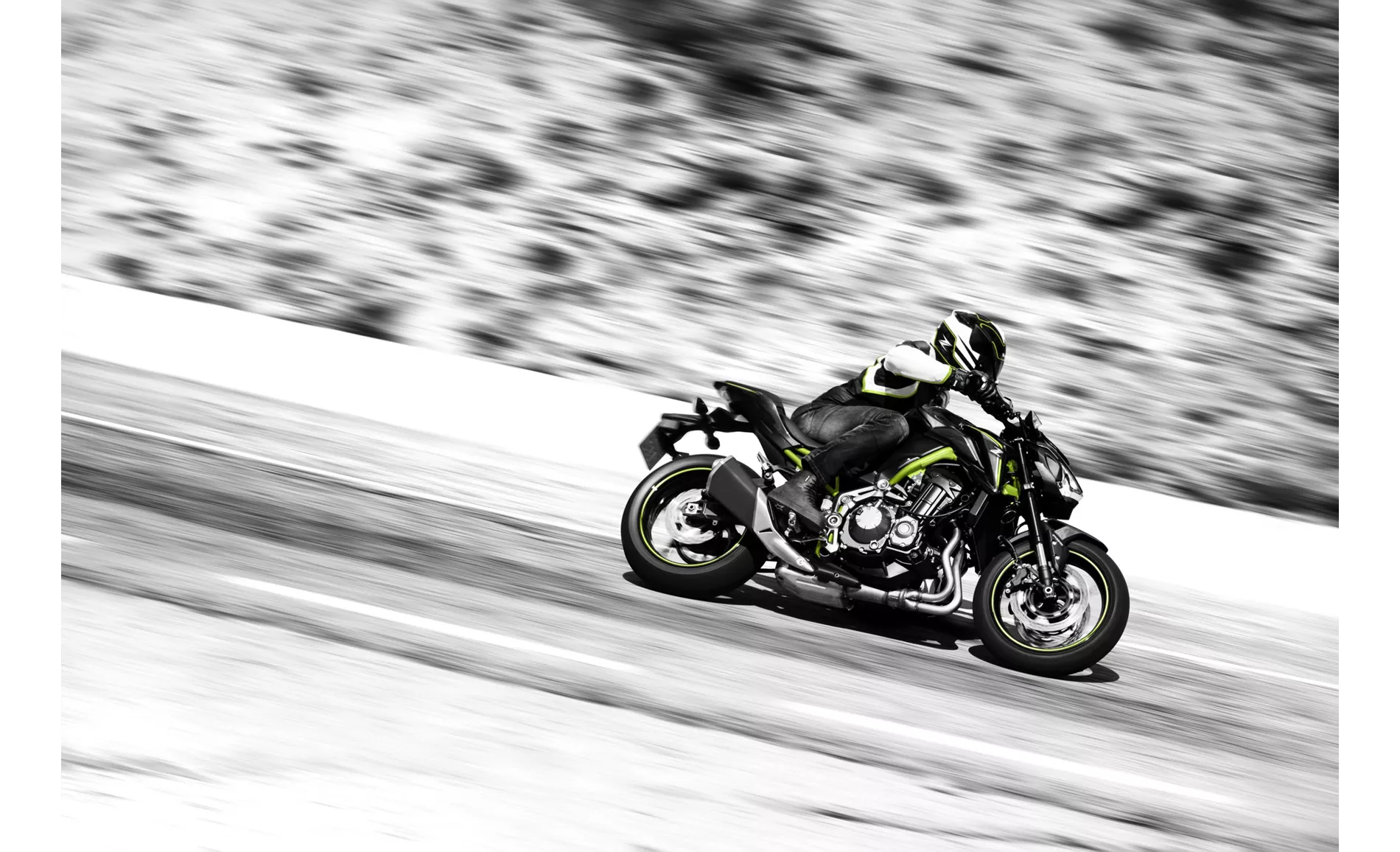
Kawasaki Z900 2018
The Kawasaki Z650 2020 is powered by an inline twin-cylinder engine that produces 68.2 horsepower and 65.7 Nm of torque. The engine is also fuel-injected and has a displacement of 649cc. It is cooled by a liquid cooling system.
The suspension setup of the Z650 2020 consists of a telescopic fork at the front and a swing arm with a monoshock at the rear. The rear suspension can be adjusted for preload. The frame of the bike is made of steel and has a tubular design.
Similar to the Z900 2018, the Z650 2020 has double disk front brakes with a diameter of 300mm. However, the front brakes use double piston calipers instead of four pistons. The bike also comes with ABS as an advanced rider assistance system. The front tire has a width of 120mm and a diameter of 17 inches, while the rear tire has a width of 160mm and a diameter of 17 inches. The wheelbase is slightly shorter than the Z900 2018 at 1410mm, and the seat height is 790mm. The bike has a kerb weight of 187.1kg with ABS.
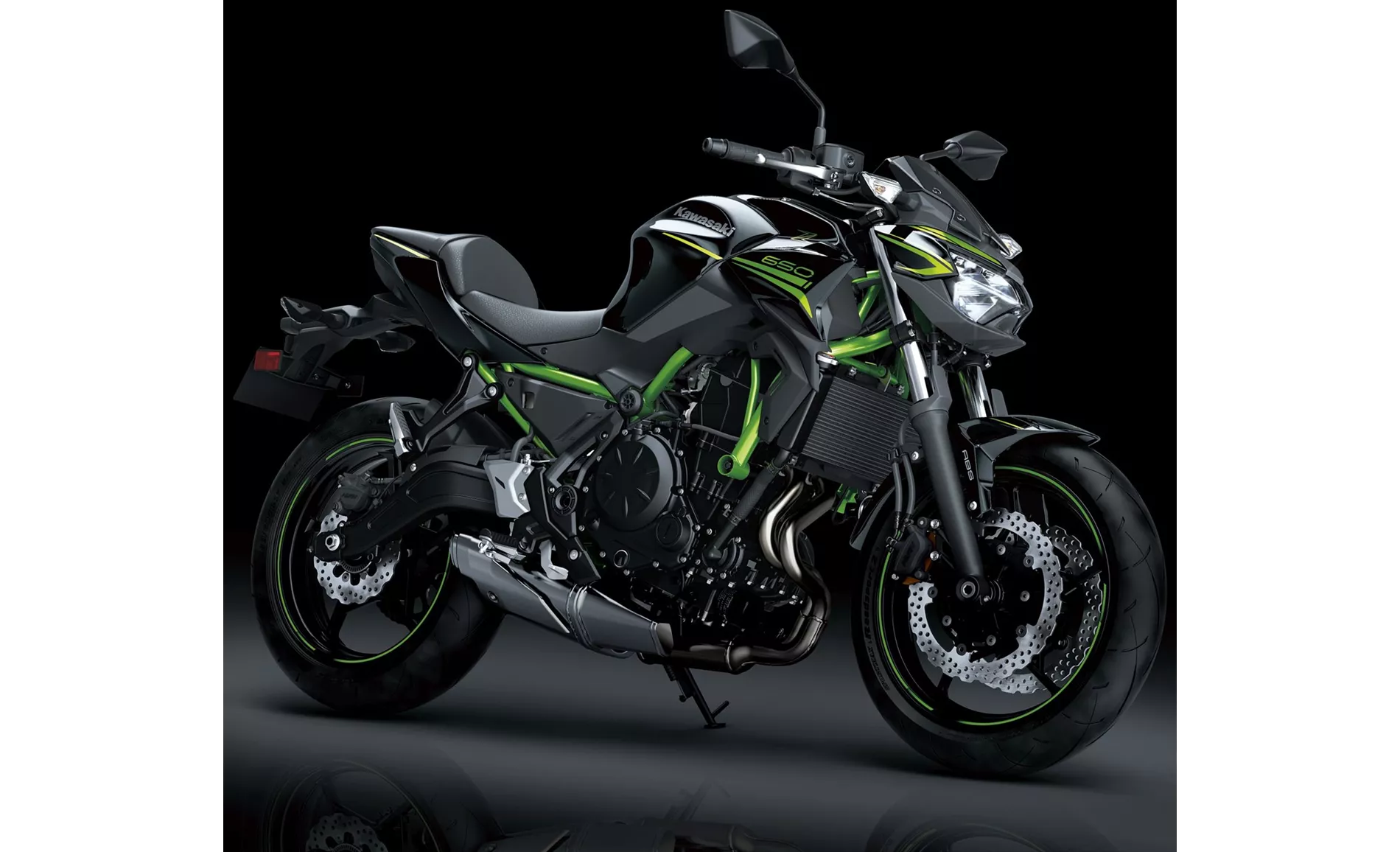
Kawasaki Z650 2020
In terms of strengths, the Z900 2018 is praised for its powerful and smooth engine, great sound, sharp and sporty look, low seating position, and easy handling and manoeuvrability. On the other hand, the Z650 2020 is commended for its powerful two-cylinder engine, aggressive intake noise, compact dimensions, low seat height, stable chassis, TFT display with connectivity, and grown-up look.
As for weaknesses, the Z900 2018 is criticized for its lack of traction control and the knee angle being strenuous for tall riders in the long run. On the other hand, the Z650 2020 is noted to have a front brake pressure point that may not be to everyone's liking, it may be uncomfortable for tall riders, and the Rideology App is not considered to be 100% sophisticated.
Overall, the Kawasaki Z900 2018 offers a more powerful engine and a higher level of performance, while the Z650 2020 provides a more compact and accessible package with some modern features. The choice between the two models depends on the rider's preferences and priorities.
Caractéristiques techniques Kawasaki Z900 2018 par rapport à Kawasaki Z650 2020
Avantages et inconvénients en comparaison
Avantages et inconvénients en comparaison
Kawasaki Z900 2018
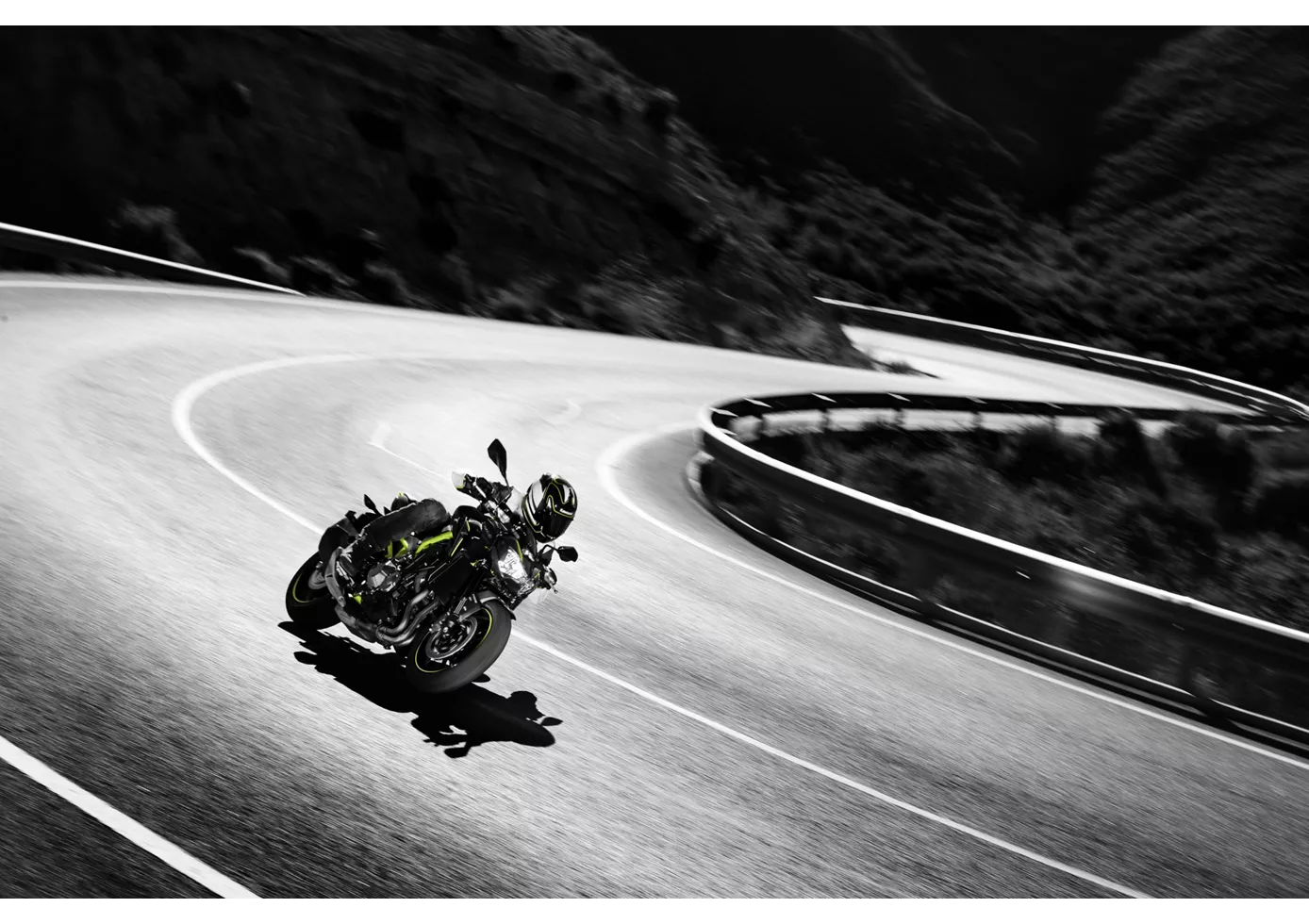
Dans le segment très concurrentiel des naked bikes, la Z900 joue dans la cour des grands. Son moteur, en particulier, est absolument grandiose, incroyablement soyeux et offre une puissance élevée à tous les régimes - comme il se doit pour un quatre cylindres japonais. Son look sportif et agressif s'y prête bien. Elle renonce aux fioritures électroniques, mais offre néanmoins une grande sécurité dans les virages, au freinage et en sortie d'accélération. La selle basse profite surtout aux petits pilotes, mais les grands pilotes pourraient regretter un angle du genou plus plat sur les longs trajets. Le faible poids et la compacité de la Z900 la rendent particulièrement maniable et facile à manier. Un canon sportif dont le prix est également très attractif
Kawasaki Z650 2020
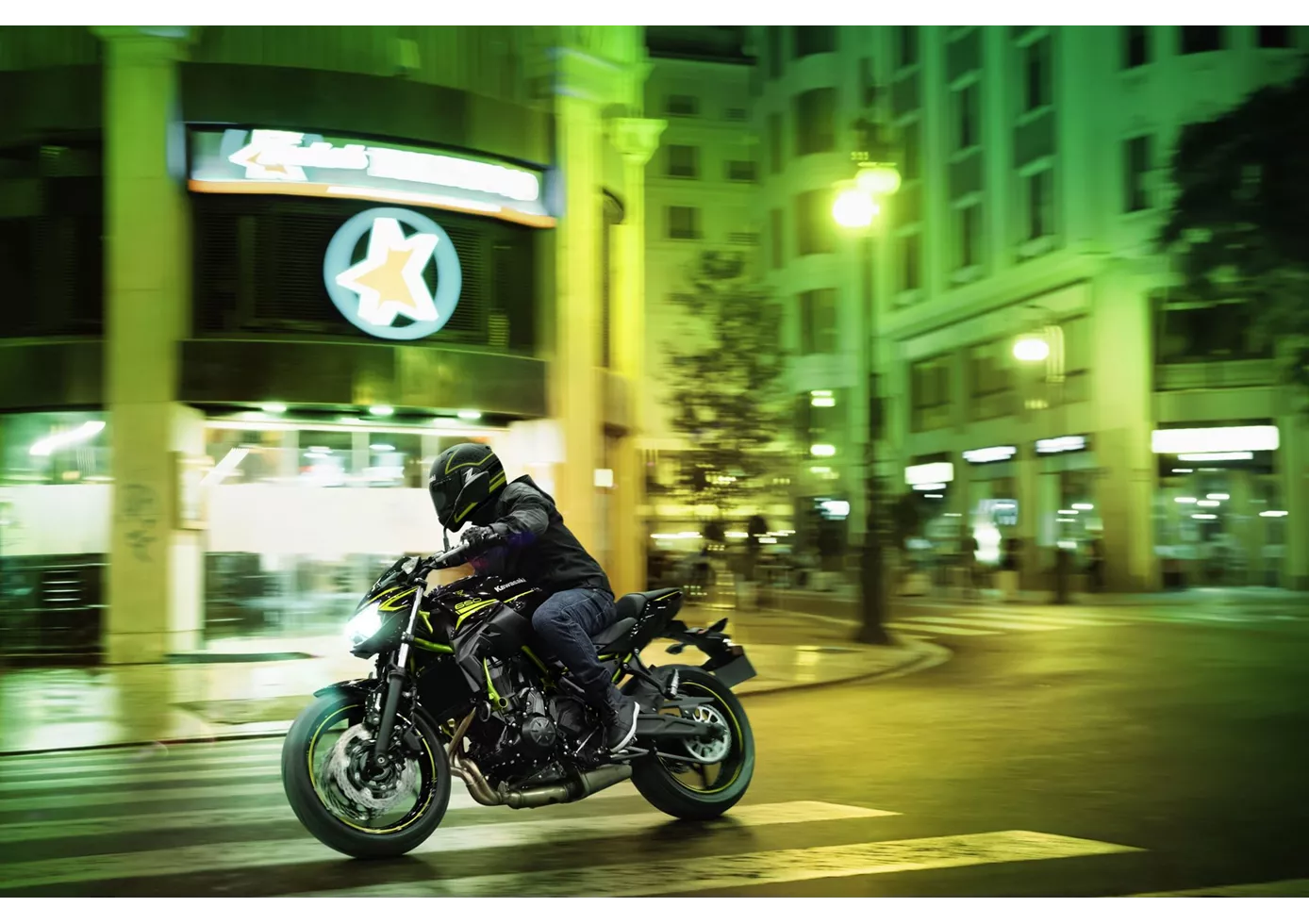
La nouvelle Z650 de Kawasaki est tout simplement un paquet complet. Les composants techniques ne sont peut-être pas à la hauteur, mais combinés entre eux, ils donnent une moto agréablement neutre, avec laquelle tout le monde aura beaucoup de plaisir. Pas de bizarreries - simplement une moto naked qui fonctionne vraiment bien sur les routes de campagne sinueuses. L'écran TFT, que nous ne trouvons pas encore chez la concurrence, ainsi que l'aspect adulte, qui s'inspire fortement des modèles Z plus grands, sont bien sûr des atouts supplémentaires. Seul le point de pression du frein avant aurait pu être plus clairement défini - mais dans cette catégorie de prix, on ne peut pas tout avoir.
Comparaison des prix Prix moyen du marché Kawasaki Z900 vs Kawasaki Z650
There are a few key differences between a Kawasaki Z900 2018 and a Kawasaki Z650 2020. In terms of price, the actual average price of a Kawasaki Z900 2018 is about 38% higher. A Kawasaki Z900 2018 experiences a loss of 640 USD in one year of ownership. This is offset by a loss of 30 USD for a Kawasaki Z650 2020. Compared to Kawasaki Z650 2020 there are more Kawasaki Z900 2018 bikes available on the 1000PS.de Marketplace, specifically 55 compared to 21. It takes less time to sell a Kawasaki Z650 with 80 days compared to 112 days for the Kawasaki Z900. Since model year 2017 1000PS.de editors have written 46 reviews for the Kawasaki Z900 and 31 reviews for the Kawasaki Z650 since model year 2017. The first review for the Kawasaki Z900 was published on 11/11/2016 and now has more than 93,200 views. This compares to more than 25,000 views for the first review on Kawasaki Z650 published on 11/8/2016.
